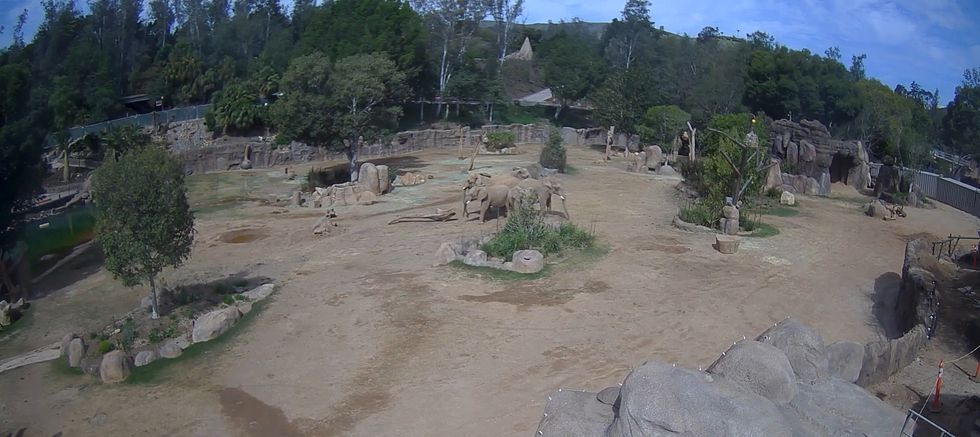Science & Tech
German tourist climbs pyramid and gets arrested
Spot on News - News English / VideoElephant
An ancient pyramid in Mexico was found to contain liquid mercury, a rare element discovered in its underground chambers, and this find has led to further theories as to what the structure was used for.
The Quetzalcoatl temple (otherwise known as the Feathered Serpent Pyramid) in the ancient city of Teotihuacan, Mexico, is estimated to have been built around 800 and 1,900 years ago.
Not much was known about the temple's purpose, but in 2015, researchers discovered "large quantities" of the rare and toxic liquid mercury, leading them to theorise the structure was used to "look into the supernatural world".

Located at the end of a 338-foot-long tunnel, the mercury was found in the hidden chambers.
What is the supernatural connection?
Back in those days, water was thought of as a gateway that linked the supernatural worlds, and like water, liquid mercury is also reflective.
Therefore, the theory is that the chamber was filled with liquid mercury by the Teotihuacan civilisation to resemble a portal to a Mesoamerican ruler we don't know about, according to Mexican researcher Sergio Gómez.
The alternative theory
A second theory offers an alternative reason that suggests there were technological advancements centuries ahead of its time for the use of liquid mercury and another substance - large sheets of mica, a shiny silicate mineral with a layered structure that can be used as a thermal or electrical insulator.
Gómez's research team reckon liquid mercury and mica may have been used as part of an elaborate ritual, but in recent times it's thought that the two substances were important for an energy-generating device inside the temple.
Is there anything to compare this discovery to?
Short answer - not really, leaving researchers confused.
Pools of liquid mercury have only been discovered by archaeologists in one similar pyramid-like structure in the world, this being the Mausoleum of the First Qin Emperor in China.

The liquid mercury and mica
In Mesoamerica, smaller traces of liquid mercury have been discovered on expeditions to other sites (one Olmec and two Mayan), and in contrast, mica was found all over Teotihuacan during excavations in the early 1900s.
More of this was unearthed by Gómez's team near the Pyramid of the Sun and within the tunnel under the Feathered Serpent Pyramid.
"Mirrors were considered a way to look into the supernatural world, they were a way to divine what might happen in the future," said Annabeth Headrick, an art history professor at the University of Denver specialising in Mesoamerican cultures, speaking to The Guardianafter the discovery a decade ago.
"A lot of ritual objects were made reflective with mica," she added.
Furthermore, adding to the oddness is the fact that one of the nearest sources of mica is around 4,600 miles away in Brazil.
What's more, a complex process would need to take place to actually get liquid mercury, where it would need to be extracted from the cinnabar rock, a light red stone comprising solid mercury sulfide.
To put into perspective just how hazardous this process would've been, it would require the stone to be heated so that the mercury could be melted out.
After this, the toxic substance (where exposure can cause death) would then need to be moved through the pyramid tunnel.
Ritual vs power plant theories
On the one hand, there's the theory from Gómez's team, who argue that the liquid mercury and mica were used in a ritual for an unknown Mesoamerican king's journey to the underworld.
But on the other hand, you have the power-plant theory, and supporters argue the identity of this Mesoamerican king remains unknown, and in the ancient city, no burial chamber has been found.
Consequently, this lack of information for the ritual theory means has only added to conjecture that the two elements were used for a mechanical energy device.
But this would mean this device was built over 1,700 years before the invention of the first electrical power plant.
Ancient astronaut theories - and why they're not true
Ancient mysteries are what ancient astronaut theorists cite as unsupported evidence of early human contact with extraterrestrials.
Examples of unconventional theories include that liquid mercury could've powered an electromagnetic or propulsion device thanks to its conductive properties. Or mercury found in the tunnel could generate electricity and when combined with other materials or structures, create a closed-circuit system.
Given that mica is an insulator of heat and electricity, another suggestion is that the substance was used with the purpose of channelling or containing energy within the pyramid and tunnel.
The sheets lining the tunnels and chambers under the pyramid would have created a 'capacitor-like' system, storing or directing energy.
But alas, there has been no evidence found by researchers to support these fringe theories.
Elsewhere, space discovery shows the pyramids were built using ingenious method, and ‘World’s oldest pyramid' was not made by humans, archaeologists claim.
How to join the indy100's free WhatsApp channel
Sign up to our free indy100 weekly newsletter
Have your say in our news democracy. Click the upvote icon at the top of the page to help raise this article through the indy100 rankings.
Top 100
The Conversation (0)














